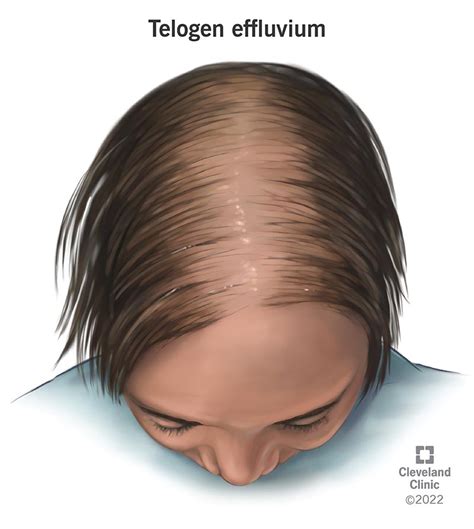Hair loss on top of the head, also known as androgenetic alopecia, is a common problem that affects millions of people worldwide. It is estimated that around 50% of men and 25% of women will experience some degree of hair loss by the age of 50.

Causes of Hair Loss on Top of Head
The most common cause of hair loss on top of the head is genetics. Androgenetic alopecia is caused by a combination of genes and hormones. In men, hair loss is often triggered by the hormone dihydrotestosterone (DHT), which is a derivative of testosterone. DHT binds to receptors on the hair follicles, causing them to shrink and eventually stop producing hair. In women, hair loss is often caused by a combination of factors, including genetics, hormones, and aging.
Other causes of hair loss on top of the head include:
- Telogen effluvium: This is a temporary condition that can be caused by stress, illness, or certain medications.
- Alopecia areata: This is an autoimmune condition that causes hair to fall out in patches.
- Scarring alopecia: This is a permanent condition that can be caused by burns, injuries, or certain medical conditions.
Symptoms of Hair Loss on Top of Head
The most common symptom of hair loss on top of the head is thinning hair. You may also notice that your hair is becoming shorter and finer. In some cases, you may also experience itching or burning on the scalp.
Diagnosis of Hair Loss on Top of Head
Your doctor can diagnose hair loss on top of the head by examining your scalp and asking you about your medical history. Your doctor may also order blood tests to rule out any underlying medical conditions.
Treatment for Hair Loss on Top of Head
There are a number of treatments available for hair loss on top of the head. The most effective treatments are those that target the underlying cause of hair loss.
Medications: There are a number of medications that can be used to treat hair loss on top of the head. These medications work by blocking the production of DHT or by increasing the blood flow to the scalp.
Surgery: In some cases, surgery may be an option to treat hair loss on top of the head. Surgery can be used to remove the affected hair follicles or to transplant hair from another part of the body to the scalp.
Prevention of Hair Loss on Top of Head
There is no sure way to prevent hair loss on top of the head, but there are a number of things you can do to reduce your risk. These things include:
- Eat a healthy diet: A healthy diet that is rich in fruits, vegetables, and whole grains can help to keep your hair healthy and strong.
- Get regular exercise: Exercise can help to improve blood flow to the scalp, which can help to promote hair growth.
- Reduce stress: Stress can contribute to hair loss, so it is important to find ways to manage stress in your life.
- Avoid smoking: Smoking can damage the hair follicles and lead to hair loss.
- Protect your hair from the sun: The sun’s UV rays can damage the hair and lead to hair loss.
Common Mistakes to Avoid
There are a number of common mistakes that people make when it comes to hair loss on top of the head. These mistakes include:
- Ignoring hair loss: If you are experiencing hair loss, it is important to see a doctor to rule out any underlying medical conditions.
- Using harsh hair care products: Harsh hair care products can damage the hair and lead to hair loss.
- Over-styling your hair: Over-styling your hair can put stress on the hair follicles and lead to hair loss.
- Wearing tight hairstyles: Wearing tight hairstyles can put stress on the hair follicles and lead to hair loss.
- Giving up too soon: Hair loss treatment can take time, so it is important to be patient and stick with your treatment plan.
Pros and Cons of Hair Loss Treatment
There are a number of pros and cons to hair loss treatment.
Pros:
- Hair loss treatment can help to stop or slow down hair loss.
- Hair loss treatment can help to improve the appearance of the hair.
- Hair loss treatment can boost self-confidence.
Cons:
- Hair loss treatment can be expensive.
- Hair loss treatment can have side effects.
- Hair loss treatment is not always effective.
Conclusion
Hair loss on top of the head is a common problem, but it is important to remember that you are not alone. There are a number of effective treatments available, and with the right treatment, you can regain your hair and boost your self-confidence.
